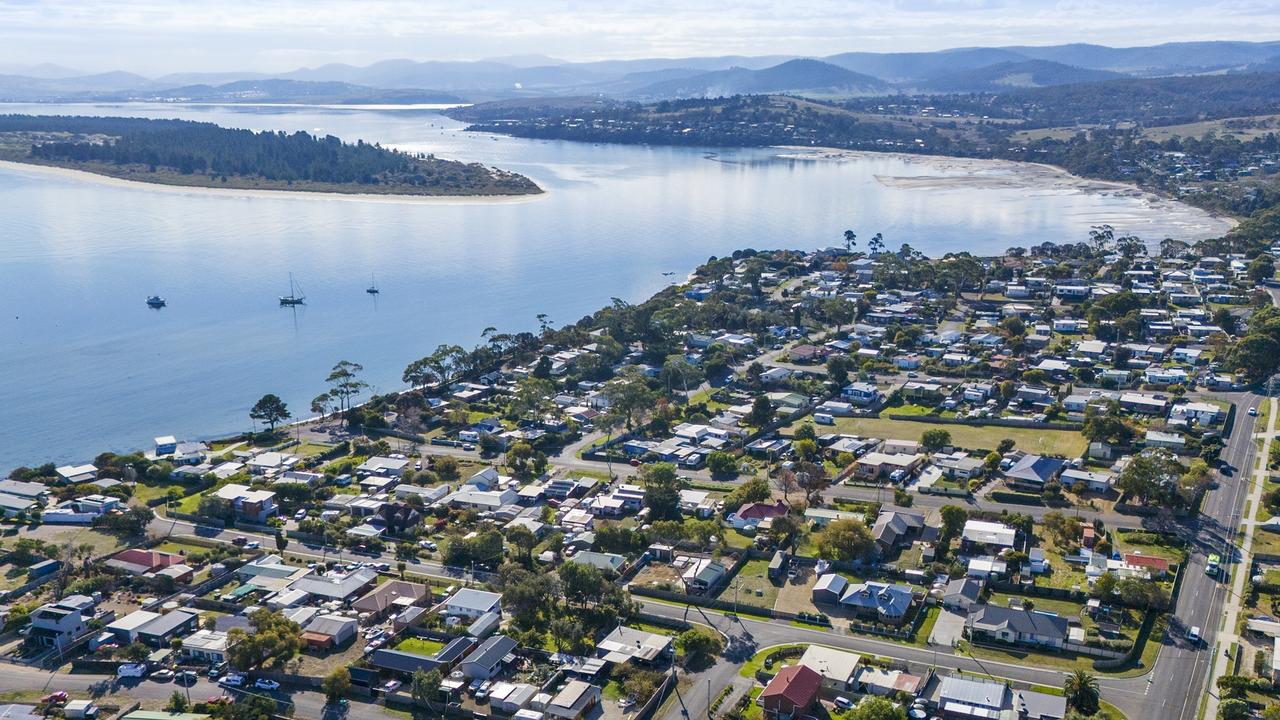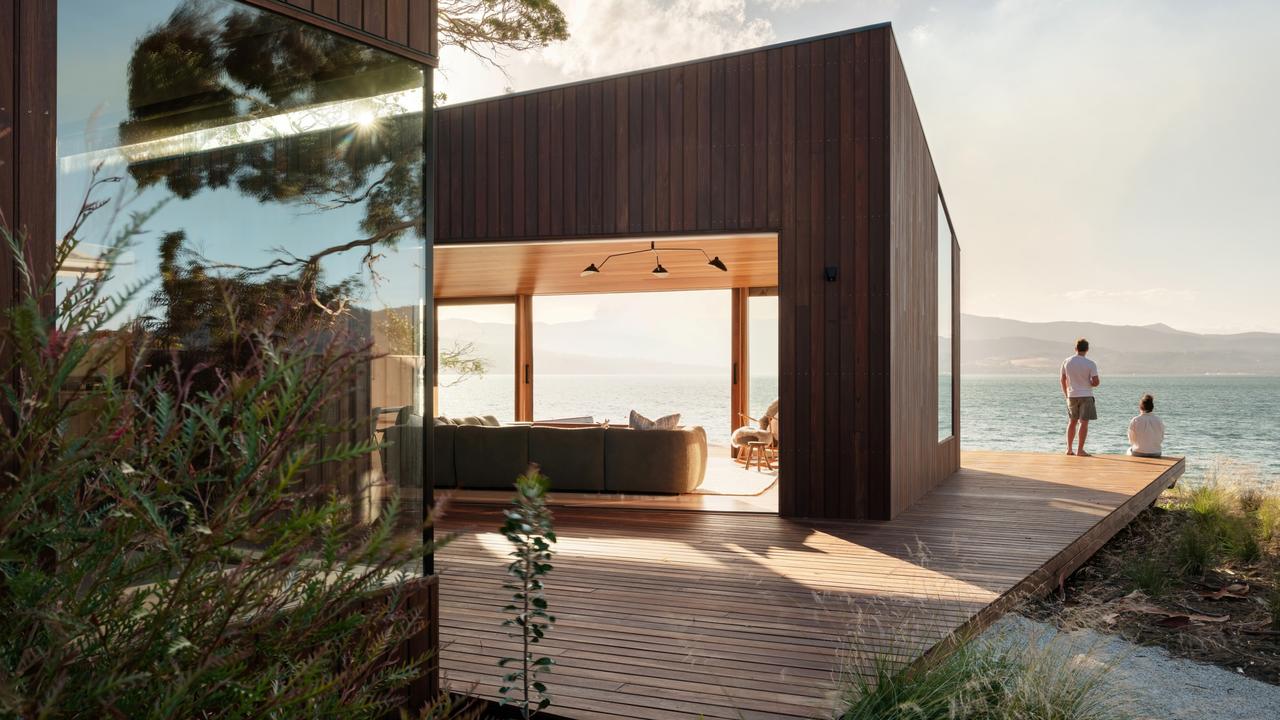TasWeekend: A closer look at the Three Capes Track
TASWEEKEND: Despite funding uncertainty delaying work on its final stage to next year, the first paid walks along the $40m Three Capes Track are finally on the horizon.
EVEN in the kind of gloomy weather the Tasman Peninsula is known for, it is still a strikingly beautiful place.

Paying an advance visit to the nearly completed Three Capes Track last week, watching the low clouds swirling around the hills and the drizzle wafting through, it quickly becomes clear we are not going to get the blue skies and opaline ocean views promised by images online. But once we find ourselves high above sea level at Cape Pillar with the cloud base just above our heads, we look out at the immense cliffs and mist-shrouded capes to find it’s just as enthralling in this moody weather.
The Three Capes Track is due to open officially on Wednesday, December 23, just in time for the Christmas break and warmer weather. With work still under way, there have already been more than 1300 bookings made to walk the track, the full experience including a trip on a Pennicott Wilderness Journeys boat to Crescent Bay and then to the track’s start at Denmans Cove, three nights’ accommodation in the new hikers’ huts and site entry at the Port Arthur Historic Site.
With the 46km route rated as easy to moderate, the track has been constructed with timber walkways, sturdy stairs and rock and gravel pathways specifically catering to those of modest bushwalking ability.
Intended to appeal to those embarking on their first multi-day walk, the track will be well-suited to families with children, as well as those who simply don’t want to have to carry all their camping supplies with them. The oldest hiker to book a spot so far is 86.
“We want it to appeal to people who want to do a bushwalk but don’t have all the gear – the Trangia, the tent, all that expensive stuff,” Tasmania Parks and Wildlife Service communications manager Liz Wren says.
“Here, you don’t need a tent, you don’t need a camp stove, you don’t need a mattress. You just need your sleeping bag and some food, the bare minimum. You don’t need big heavy boots, just lightweight but sturdy footwear is fine. It’s a dry-boot track, it’s all stone, gravel or timber boardwalk.”
All you need to worry about is enjoying the few hours of walking each day, the cosy accommodation and the stunning views.
The view from the top of the Blade – a steplike crest of dolerite near the tip of Cape Pillar – is the clear highlight of the track, looking south to the massive slab of Tasman Island, west towards Cape Raoul and north to Cape Hauy and (on a clear day) Maria Island.
Bookings for the Boxing Day-New Year period are close to sold out as walkers plan to not only make the most of the warm weather but also the chance to watch the Sydney Hobart Yacht Race fleet round Tasman Island on its way to the finish line.

First touted by former premier Paul Lennon in 2007, the Three Capes Track was intended to improve existing walking tracks in the area and allow people to walk to the three spectacular cliff-points Cape Hauy, Cape Pillar and Cape Raoul.
Costing $40 million, with those finances split between State and Federal governments, work on the track started in 2011 and has been completed in stages, the renovated Cape Hauy section of the track the first to reopen to hikers.
There has been uncertainty over funding for the final leg of the track – a loop around to Cape Raoul, south of Port Arthur. The State Government had allocated $4 million for the construction of this segment but Federal funding has not been confirmed, meaning only two of the three capes can be accessed by the new track. But, with the main part of the track on schedule and already luring promising visitor numbers, plans are for work to start on the Cape Raoul section before the end of the financial year, using what funds are available.
Preparing myself for my brief tour of the Three Capes Track, I feel like some sort of proof-of-concept experiment.
Many years ago, I was a boy scout and went bushwalking regularly. I had all the gear and wouldn’t bat an eyelid at hiking somewhere with no tracks or paths, carrying everything I needed to camp out overnight and cook my food from scratch. But on the day of my visit, I am wearing sneakers that have never been worn outside the gym, since I no longer own hiking boots. I am carrying my lunch and a few other things in my wife’s old purple high-school backpack because I no longer own my own. The only other backpack in our house is a blue-and-pink Cinderella one, which my daughter needed for day care.
In short, I feel slightly ill-equipped for this kind of thing. But in theory, I should be able to do the walk pretty much just like this.

However, even our short walk and brief visit is in danger of being called off, with the weather limiting helicopter operations.
A clearing for landing and take-off in the middle of dense bush also serves as a staging post for the ongoing construction work. Arranged neatly around a central space for landing a helicopter are clusters of building supplies waiting to be flown in to the rugged, remote work sites along the peninsula.
Huge bags of gravel, tightly strapped bundles of timber and giant stacks of prefabricated bunk beds are stacked up, ready to be collected by the helicopter and airlifted to where they need to go.
“We use the helicopter essentially like a crane would be used on any other construction site,” project manager Justin Helmich says.
“This staging area puts us very close to the track and it only takes two to five minutes for the helicopter to get to anywhere it needs to go from here. It spends most of the day going back and forth between here and the various parts of the track where work is still being carried out. On average, it makes 88 trips each day. One day it did 120.”
About 10am, the clouds have lifted a little. While conditions are still too dangerous to carry heavy loads, the helicopter pilot has agreed to take us up to see if he can get us to the Munro Hut landing site.
In this weather, one landing is all we are likely to get and we do not have enough time to venture too far down the track.
As we fly towards the eastern section of the Tasman National Park, a long peninsula running from Fortescue down to Cape Pillar and Tasman Island, the tops of the hills are covered in clouds. We skim just above the trees until we reach the top of the slope. Then, just as it starts getting a bit misty, we drop down into clear air with the ocean stretching away ahead of us and those famous sheer walls of rock on either side.
After following the sea cliffs south, we fly up and over the towering cliff face and land on a tiny helipad right on the ledge.
With the weather still foul, the pilot says he will need to keep the engine running, ready for a quick exit, meaning we have five minutes to visit Munro Hut before flying out once more. A longer walk is out.

The Munro Hut marks what is essentially the halfway point, with sleeping quarters and communal kitchen and lounge facilities for walkers at the end of the second day on the four-day walk.
Designed by Tasmanian architects JAWSARCHITECTS and built by Devonport business AJR Construct, the attractive hut complex is low-profile and low-impact.
The steel and high-density timber construction makes the structure bushfire-resistant. In the event walkers are on the track during a fire, the huts can serve as refuges. The windows are angled down at 20 degrees to reflect the ground, which prevents birds from trying to fly through the glass and injuring themselves.
The communal hut features a low-emission pellet fire and a stainless steel kitchen with a hand pump for water.
The idea is to encourage walkers to mingle and make new friends.
The toilet block is situated with a view out over the cliffs towards Cape Hauy, making it one of the most scenic dunnies in the state. And they are cassette toilets, meaning all the sewage is contained and periodically removed from the site for disposal, so nothing goes into the ground.
Furniture design students from UTAS have created the gracefully curved seats and benches that mark scenic rest spots along the track and around the huts, including a semicircular bench with a view over the clifftop from Munro Hut.
The timber joinery at the hut is beautiful and it is easy to see the high quality of workmanship that has gone into the track.

The length of the track is dotted with interpretive “story-starter” panels and original artworks.
As Helmich says, the emphasis is on helping people enjoy the track without damaging the environment they came to see – and to make it as easy as possible for them to do so.
“With this track, you don’t have to spend as much time looking down at your boots, so you can spend more time looking up and around yourself,” he says.
Only about 13 per cent of those who have booked are Tasmanian and about 6 per cent are from overseas. The overwhelming majority are from interstate, with 34 per cent coming from NSW alone.
“That breakdown is very similar to other big walks like the Overland,” Wren says.
“It makes sense when you consider Tasmania is a small place and we are a well-known destination all over the world for bushwalking.”
And while there has been some backlash over the price of the walk, Helmich thinks people will change their minds when they see what is on offer.
“Access has been a contentious issue, but we are not locking anyone out,” he says. “The old walking track from Fortescue Bay is still there – you can still use that and join up with the new section when you reach it. You couldn’t use the huts, obviously, but there is a campsite at Retakunna people can use, just as they always have.
“All the places people have been traditionally able to walk through, they still can.
Pick up a copy of TasWeekend’s inaugural travel issue in your Saturday Mercury.
Three Capes Track
OPENS: Wednesday, December 23
DISTANCE: 46km (four days, three nights)
GRADE: Easy-moderate
STARTS: Port Arthur Historic Site, travel by boat to start of the track at Denmans Cove
ENDS: Fortescue Bay, cost includes bus transport back to Port Arthur
PARKING: Free parking at Port Arthur Historic Site for duration of walk
PRICE: Adults cost $495, concession and children aged 3-17 cost $396
INCLUDES: Site entry, car parking, secure lockers at Port Arthur Historic Site, Pennicott Wilderness Journeys cruise leaving Port Arthur at 11.30am and 2pm daily, three nights’ accommodation in cabins on track, bus transfer from Fortescue Bay back to Port Arthur Historic Site and Encounters on the Edge guide book with maps
INFORMATION/BOOKINGS: Phone 1300 TASPARKS (1300 827 727), email threecapestrack@parks.tas.gov.au, or visit threecapestrack.com.au
Originally published as TasWeekend: A closer look at the Three Capes Track



